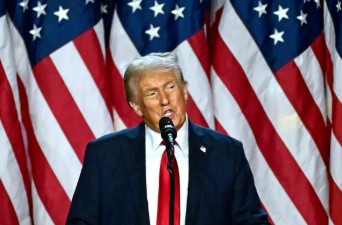The United States is preparing to implement a new wave of tariffs on dozens of its trading partners starting Friday, August 1, unless last-minute agreements are reached with President Donald Trump. The planned hikes cover a broad range of consumer staples and raw materials, raising concerns over inflationary pressure on American households.
Economists warn that the steep tariffs—paid by U.S. importers—will raise business costs and likely trickle down to consumers, threatening to dampen domestic consumption, a critical pillar of the world’s largest economy.
The scope of the tariffs spans agriculture, apparel, food products, and industrial goods, with some countries facing duty rates as high as 50%.
Products Affected:
Coffee
Over 99% of U.S. coffee is imported, and two-thirds of U.S. adults drink it daily, according to the National Coffee Association.
- Brazil, which supplies over 30% of U.S. coffee, faces a 50% tariff, announced in protest against legal action targeting ex-president Jair Bolsonaro, a Trump ally.
- Vietnam faces a 20% duty, despite a recent trade agreement.
Shirts & Apparel
More than half of U.S. clothing imports between January and May came from China, Vietnam, and Bangladesh, says the American Apparel & Footwear Association.
- China: Already hit with a 30% duty, which could increase after August 12 if a trade truce expires.
- Vietnam: Accounts for 20% of U.S. clothing imports; future tariffs uncertain.
- Bangladesh: Faces a possible 35% tariff.
Jasmine Rice
The U.S. is the top rice importer in the Western Hemisphere, bringing in 1.3 million tons annually, mostly jasmine and basmati rice.
- Thailand: Faces a 36% duty
- India: 26% duty
- Pakistan: 29% duty
Smaller quantities of medium and short-grain rice from Asia and South America are also at risk.
Cocoa & Cocoa Butter
Annual U.S. cocoa bean imports exceeded $1.1 billion from 2017–2021.
- Ivory Coast: Faces a 21% tariff on cocoa beans.
- Indonesia and Malaysia: Face 19% and 25% tariffs, respectively, on cocoa butter shipments valued at $576 million annually.
Copper & Electronics
A planned 50% duty on copper imports could deeply impact construction and electronics manufacturing.
Consulting firm BCG projects an $8.6 billion increase in copper costs if the tariffs go into effect, with the construction industry, which uses 42% of domestic copper, expected to be hit hardest.
The tariff plan threatens to upend trade relations with key global partners in Asia, Africa, and Latin America, while also adding pressure on U.S. industries that rely on imported raw materials and components.
As the August 1 deadline approaches, governments and multinational businesses alike are bracing for potential supply disruptions and price volatility.







